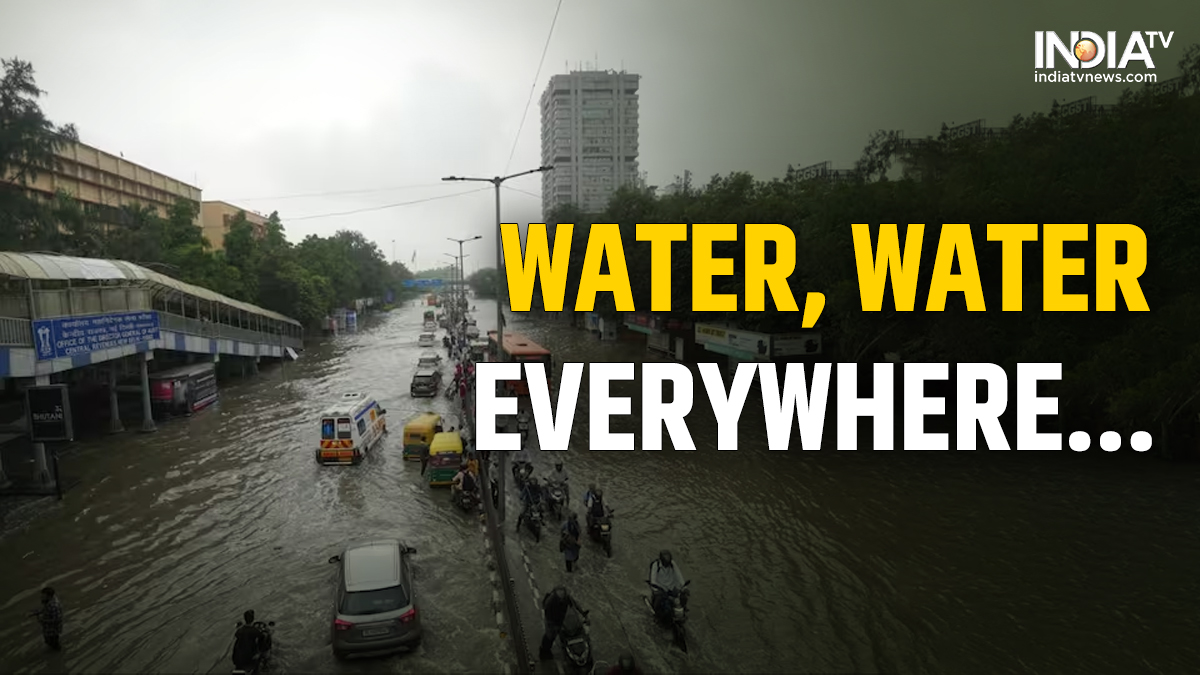Yamuna floods: Once it was a river but dumping spot now. People around the world are eyeing the fouled-up Yamuna which is considered one of the sacred rivers in India. The longest tributary in the country is spread across seven states- Himachal Pradesh, Uttarakhand, Uttar Pradesh, Haryana, Rajasthan, Madhya Pradesh, and Delhi-NCR. But, what it is up to? The river which is a lifeline to a thousand people is going through the "worst phase." Following torrential rain in the northern parts of India, Yamuna swelled up and entered several areas in Delhi causing destruction in normal life. People say- Karma will hit you back... Is Delhi meeting the same fate?
Despite having plans for the conservation of rivers, Yamuna never revived. Do you ever wondered- How rivers are conserved in the country? Which body is working day and night to protect these lifelines?
Floods- a ritual in India
Even with having a comprehensive mega plan for conserving rivers in the country, many parts of India still go through flood-related problems, Bihar and Assam are to name a few. It has become a ritual for many parts to suffer devastation due to floods during monsoon season. Let us highlight that, some parts of India are highly vulnerable to floods. Out of the total geographical area of 329 million hectares (mha), more than 40 mha is flood-prone. Apart from the Delhi-Yamuna crisis, states like Punjab, Haryana, Himachal Pradesh, Uttarakhand, Bihar, Assam, Arunachal Pradesh, and more face flood-like situations.
According to National Disaster Management Authority, on average every year, 75 lakh hectares of land are affected, 1600 lives are lost and the damage caused to crops, houses, and public utilities is Rs.1805 crores due to floods. The maximum number of lives (11,316) was lost in the year 1977. The frequency of major floods is more than once in five years.
Here, we are up with a detailed piece describing the 'National River Conservation Plan' and everything you should need to know.
What is National River Conservation Plan?
National River Conservation Plan works on reviving rivers by preventing the pollution of rivers. Launched in 1995, it is a centrally funded program. Earlier in May 2001, during a meeting comprising the National River Conservation Authority idea of a 70:30 share was introduced. It was decided that the program will be implemented with 70:30 sharing of the burden of all costs between the Centre and the states. Moreover, 10% of the minimum total cost will be from the public.
Conservation of rivers in the country is implemented under National River Conservation Plan (NRCP) and National Ganga River Basin Authority (NGRBA). Later in December 1996, the Phase II of the Ganga Action Plan was merged with NRCP.
What is the objective of NRCP?
The conservation program aims to reduce the pollution load in rivers through the implementation of various pollution
abatement works, thereby improving their water quality. As per the data available on the government website, presently NRCP (excluding Ganga and its tributaries) has covered polluted stretches of 33 rivers in 76 towns spread over 15 States at a sanctioned cost of Rs.4801.57 crore.
The pollution abatement works taken up under the NRCP include:
- Interception and diversion works/ laying of sewerage systems to capture raw sewage flowing into the rivers through open drains and diverting them for treatment.
- Setting up of Sewage Treatment Plants (STPs) for treating the diverted sewage.
- Construction of Low-Cost Sanitation Toilets to prevent open defecation on river banks.
- Construction of Electric Crematoria and Improved Wood Crematoria to conserve the use of wood.
- River Front Development works, such as the improvement of bathing ghats.
- Public participation & awareness and capacity building, etc.
Who looks for the conservation of the Ganga River?
With effect from Aug 8, 2014, all works relating to Ganga and its tributaries have been transferred to the Ministry of Water Resources, River Development and Ganga Rejuvenation. The Ministry of Environment, Forest & Climate Change is presently implementing the works for pollution abatement of rivers, other than the Ganga and its tributaries.
How many Rivers were covered under NRCP?
Adyar (Tamil Nadu)
Beas (Himachal Pradesh and Punjab)
Bhadra (Karnataka)
Brahmani (Odisha)
Cauvery (Karnataka and Tamil Nadu)
Cooum (Tamil Nadu)
Devika (Jammu and Kashmir)
Diphu and Dhansri (Nagaland)
Ghaggar (Haryana, Himachal Pradesh, Punjab and Rajasthan)
Godavari (Andhra Pradesh, Chhattisgarh, Maharashtra, Odisha and Telangana)
Krishna (Andhra Pradesh, Maharashtra and Telangana)
Mahanadi (Chhattisgarh and Odisha)
Mandovi (Goa)
Mendiola (Gujarat)
MulaMutha (Maharashtra)
Musi (Telangana)
Narmada (Gujarat and Madhya Pradesh)
Pamba/Pampa (Kerala)
Panchganga (Maharashtra)
Pennar (Andhra Pradesh and Karnataka)
Rani Chu (Sikkim)
Sabarmati (Gujarat and Rajasthan)
Sal (Goa)
Satluj (Himachal Pradesh and Punjab)
Subarnarekha (Jharkhand, Odisha and West Bengal)
Tamrabarani (Tamil Nadu)
Tapi (Gujarat, Maharashtra and Madhya Pradesh)
Tawi (Jammu and Kashmir)
Tunga (Karnataka)
Tungabhadra (Andhra Pradesh, Karnataka and Telangana)
Vaigai (Tamil Nadu)
Vennar (Tamil Nadu)
Wainganga (Madhya Pradesh and Maharashtra)

